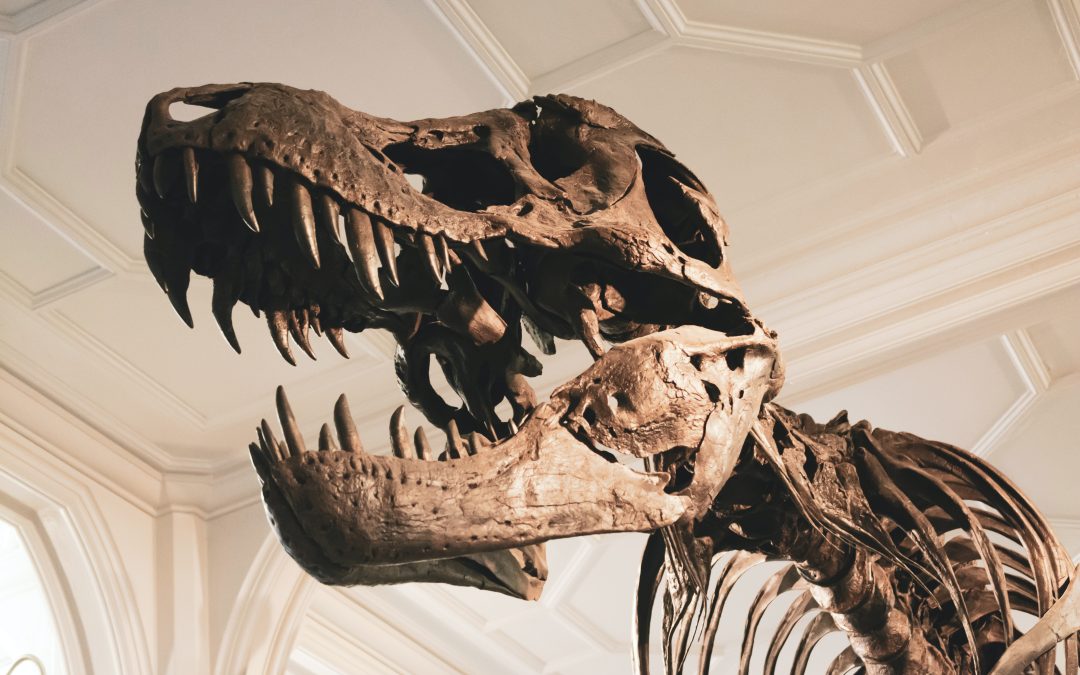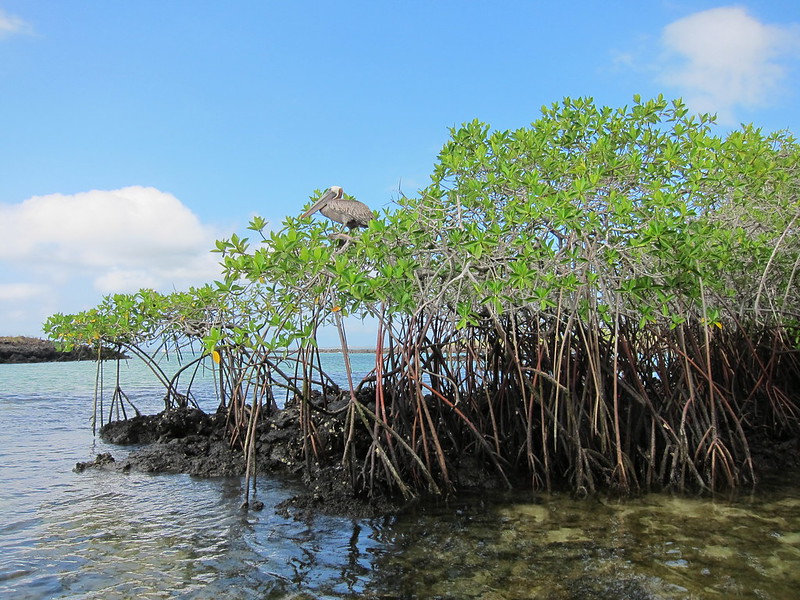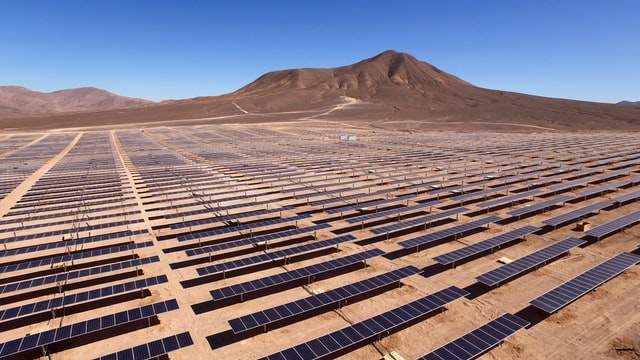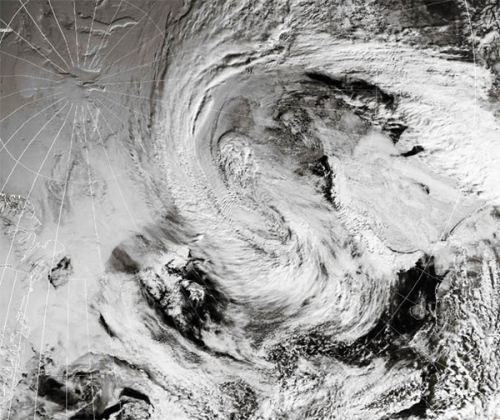
by DGR News Service | Jul 11, 2022 | ANALYSIS, Biodiversity & Habitat Destruction
Editor’s note: The dominant global culture (“industrial civilization”) is built on resource extraction and forced conversion of habitat to exclusive human use, and this has serious consequences.
Both global warming and the ongoing mass extermination of life on the planet (which has been deemed “the sixth mass extinction”), as well as other ecological crises (aquifer depletion, toxification of the total environment, ecosystem collapse, oceanic dead zones, etc.) are symptoms of humanity’s broken relationship to the planet. In plain terms: this way of life is killing the planet.
Today’s article reminds us that these crises are deeply interlinked, and so are solutions. While we are a revolutionary organization, every small step in the right direction also matters. And as a biocentric organization, we are in favor of actions to protect the natural world rather than putting our faith in technological Bright Green Lies.
By Tara Lohan / The Revelator
Mass extinction lurks beneath the surface of the sea. That was the dire message from a study published in April in the journal Science, which found that continuing to emit greenhouse gases unchecked could trigger a mass die-off of ocean animals that rivals the worst extinction events in Earth’s history.
The findings serve as just the latest reminder that climate change and biodiversity loss are interconnected crises — even if they’re rarely addressed in tandem by policymakers.
Toward that point, the Science study came with a dose of hopeful news: Action to curb greenhouse gas emissions and keep warming below 2 degrees Celsius could cut that extinction risk by 70%.
Additional research published in Global Change Biology offers another encouraging finding. The study, by an international team of scientists, found that not only can we do better at addressing biodiversity issues — we can do it while also targeting climate change.
“Many instances of conservation actions intended to slow, halt or reverse biodiversity loss can simultaneously slow anthropogenic climate change,” the researchers wrote in the study.
Their work looked at 21 proposed action targets for biodiversity that will be the focus of this fall’s international convening of the Convention on Biological Diversity in Kunming, China — a meeting delayed two years by the COVID-19 pandemic. The researchers found that two-thirds of those biodiversity targets also support climate change mitigation, even though they weren’t explicitly designed for that goal. The best opportunities to work on these crises together were actions to avoid deforestation and restore degraded ecosystems. Of particular focus, the study found, should be coastal ecosystems such as mangroves, seagrass and salt marshes, which can store large amounts of carbon and support a diversity of animals.
 A pelican enjoys a perch in a mangrove stand in the Galapagos. Photo: Hans Johnson (CC BY 2.0)
A pelican enjoys a perch in a mangrove stand in the Galapagos. Photo: Hans Johnson (CC BY 2.0)
Also important is restoring forests and woodlands, but doing so with native species is critical. Planting monocultures of nonnative trees won’t boost biodiversity, the researchers point out, despite such endeavors being incentivized as a climate change solution.
Another target is reducing runoff into rivers, lakes and coastal waters from excess nutrients — including nitrogen and phosphorus — that cause algal blooms and oxygen-depleted waters. This eutrophication, combined with warming, may increase greenhouse gas emissions in freshwater bodies, in addition to harming fish and other animals.
Expanding and connecting the network of protected areas is another mutualistic target. Globally, we’ve protected about 15% of land and 7% of marine habitats. But we need to bump those numbers up considerably. As the researchers behind the Global Change Biology study put it, “There is a substantial overlap of 92% between areas that require reversing biodiversity loss and the areas needing protection for enhancing carbon storage and drawdown.”
Working on these issues in tandem can help boost the benefits.
We’re also spending large sums of money in all the wrong places. The study lists the reduction or elimination of subsidies that are harmful to biodiversity and the climate as “one of the most important and urgent reforms.”
We spend 10 times more on subsidies for environmentally harmful practices than on biodiversity conservation, the researchers note. Brazil, for example, spends 88 times more on subsidizing activities linked to deforestation than on those that may help stop it.
Other target areas to boost biodiversity and climate work include recovering and conserving wild species; greening urban areas; eliminating overfishing; reducing food and agricultural waste; and shifting diets to include more plant-based foods and less meat and dairy.
And, the researchers say, we need to “mainstream” the issues together — embedding both climate and biodiversity targets and metrics into policy, business and consumer practices.
Understanding these issues should start early, too. A study of school curricula in 46 countries found that fewer than half addressed climate change, and a paltry one-fifth referenced biodiversity. Both these subjects should be covered more and integrated together, the researchers say.
It’s not possible, after all, to tackle one crisis without addressing the other.
To fight climate change, we need fully functioning ecosystems with healthy populations of native plants and animals.
“And climate change is damaging this capacity,” said Hans-Otto Pörtner, a study coauthor and climate researcher at the Alfred Wegener Institute, Helmholtz Centre for Polar and Marine Research. “Only when we succeed in drastically reducing emissions from fossil fuels can nature help us to stabilize the climate.”

by DGR News Service | Apr 4, 2022 | NEWS
Editor’s note: Fossil fuels are highly polluting, their extraction is linked to human rights abuses, and their continued use is killing the planet. However, renewable energy technologies also have massive unrecognized costs. Our conclusion is that resistance to both of these industries is a moral imperative.
In this article we highlight two scientific studies examining these harms. It is critical that we act proactively to defend threatened land before development plans are cemented and it becomes too late.
Researchers have warned that mining threats to biodiversity caused by renewable energy production could surpass those averted by climate change mitigation.
A University of Queensland study found protected areas, key biodiversity areas and the world’s remaining wilderness would be under growing pressure from mining the minerals required for a clean energy transition.
UQ’s Dr. Laura Sonter said renewable energy production was material-intensive—much more so than fossil fuels—and mining these materials would increase as fossil fuels were phased out.
“Our study shows that mining the materials needed for renewable energy such as lithium, cobalt, copper, nickel and aluminum will create further pressure on the biodiversity located in mineral-rich landscapes,” Dr. Sonter said.
The research team mapped the world’s mining areas, according to an extensive database of 62,381 pre-operational, operational and closed mining properties, targeting 40 different commodities.
They found that areas with potential mining activity covered 50 million square kilometers of the planet—35 percent of the Earth’s terrestrial land surface excluding Antarctica—and many of these areas coincided with places critical for biodiversity conservation.
“Almost 10 percent of all mining areas occur within currently protected sites, with plenty of other mining occurring within or nearby sites deemed a priority for future conservation of many species,” Dr. Sonter said.
“In terms of mining areas targeting materials needed specifically for renewable energy production, the story is not much better. We found that 82 percent of mining areas target materials needed for renewable energy production, of which, 12 percent coincide with protected areas, 7 percent with key biodiversity areas and 14 percent with wilderness. And, of the mining areas that overlapped protected areas and wilderness, those that targeted materials for renewable energy contained a greater density of mines than the mining areas that targeted other materials.”
Professor James Watson, from UQ’s Center for Biodiversity and Conservation Science and the Wildlife Conservation Society, said the impacts of a green energy future on biodiversity were not considered in international climate policies.
“New mining threats aren’t seriously addressed in current global discussions about the post-2020 United Nation’s Strategic Plan for Biodiversity,” Professor Watson said.
The research team said careful strategic planning was urgently needed.
“Mining threats to biodiversity will increase as more mines target materials for renewable energy production,” Dr. Sonter said.
“Combine this risk with the extensive spatial footprint of renewable energy infrastructure, and the risks become even more concerning.”
More information
Laura J. Sonter et al. Renewable energy production will exacerbate mining threats to biodiversity, Nature Communications (2020). DOI: 10.1038/s41467-020-17928-5
A University of Queensland study found protected areas, key biodiversity areas and the world’s remaining wilderness would be under growing pressure from mining the minerals required for a clean energy transition.
UQ’s Dr. Laura Sonter said renewable energy production was material-intensive—much more so than fossil fuels—and mining these materials would increase as fossil fuels were phased out.
“Our study shows that mining the materials needed for renewable energy such as lithium, cobalt, copper, nickel and aluminum will create further pressure on the biodiversity located in mineral-rich landscapes,” Dr. Sonter said.
The research team mapped the world’s mining areas, according to an extensive database of 62,381 pre-operational, operational and closed mining properties, targeting 40 different commodities.
They found that areas with potential mining activity covered 50 million square kilometers of the planet—35 percent of the Earth’s terrestrial land surface excluding Antarctica—and many of these areas coincided with places critical for biodiversity conservation.
“Almost 10 percent of all mining areas occur within currently protected sites, with plenty of other mining occurring within or nearby sites deemed a priority for future conservation of many species,” Dr. Sonter said.
“In terms of mining areas targeting materials needed specifically for renewable energy production, the story is not much better. We found that 82 percent of mining areas target materials needed for renewable energy production, of which, 12 percent coincide with protected areas, 7 percent with key biodiversity areas and 14 percent with wilderness. And, of the mining areas that overlapped protected areas and wilderness, those that targeted materials for renewable energy contained a greater density of mines than the mining areas that targeted other materials.”
Professor James Watson, from UQ’s Center for Biodiversity and Conservation Science and the Wildlife Conservation Society, said the impacts of a green energy future on biodiversity were not considered in international climate policies.
“New mining threats aren’t seriously addressed in current global discussions about the post-2020 United Nation’s Strategic Plan for Biodiversity,” Professor Watson said.
The research team said careful strategic planning was urgently needed.
“Mining threats to biodiversity will increase as more mines target materials for renewable energy production,” Dr. Sonter said.
“Combine this risk with the extensive spatial footprint of renewable energy infrastructure, and the risks become even more concerning.”
The research is published in Nature Communications.
More information: Laura J. Sonter et al. Renewable energy production will exacerbate mining threats to biodiversity, Nature Communications(2020). DOI: 10.1038/s41467-020-17928-5
A World at Risk: Aggregating Development Trends to Forecast Global Habitat Conversion
Abstract
A growing and more affluent human population is expected to increase the demand for resources and to accelerate habitat modification, but by how much and where remains unknown. Here we project and aggregate global spatial patterns of expected urban and agricultural expansion, conventional and unconventional oil and gas, coal, solar, wind, biofuels and mining development. Cumulatively, these threats place at risk 20% of the remaining global natural lands (19.68 million km2) and could result in half of the world’s biomes becoming >50% converted while doubling and tripling the extent of land converted in South America and Africa, respectively. Regionally, substantial shifts in land conversion could occur in Southern and Western South America, Central and Eastern Africa, and the Central Rocky Mountains of North America. With only 5% of the Earth’s at-risk natural lands under strict legal protection, estimating and proactively mitigating multi-sector development risk is critical for curtailing the further substantial loss of nature.
More information
Oakleaf JR, Kennedy CM, Baruch-Mordo S, West PC, Gerber JS, Jarvis L, et al. (2015) A World at Risk: Aggregating Development Trends to Forecast Global Habitat Conversion. PLoS ONE 10(10): e0138334. https://doi.org/10.1371/journal.pone.0138334

by DGR News Service | Jun 21, 2021 | Climate Change
Editor’s note: Of course this doesn’t come as a surprise. Scientists have been putting out warnings for at least 50 years now. The solution would be actually simple: What we need to do to survive is immediately stop burning any fossil fuels, return to a low energy livestyle and seriously start large scale ecological restoration projects globally to restore all the carbon we released. This could be done if modern societies only had the political will. Unfortunately, as we all know, this culture is insane and will continue its suicidal mission.
This article originally appeared in Climate&Capitalism.
Central and South America and Southeast Asia are the hardest hit regions
(London School of Hygiene & Tropical Medicine, May 31, 2021) Between 1991 and 2018, more than a third of all deaths in which heat played a role were attributable to human-induced global warming, according to a new study in Nature Climate Change.
The study, the largest of its kind, was led by the London School of Hygiene & Tropical Medicine (LSHTM) and the University of Bern within the Multi-Country Multi-City (MCC) Collaborative Research Network. Using data from 732 locations in 43 countries around the world it shows for the first time the actual contribution of man-made climate change in increasing mortality risks due to heat.
Overall, the estimates show that 37% of all heat-related deaths in the recent summer periods were attributable to the warming of the planet due to anthropogenic activities. This percentage of heat-related deaths attributed to human-induced climate change was highest in Central and South America (up to 76% in Ecuador or Colombia, for example) and South-East Asia (between 48% to 61%).
Estimates also show the number of deaths from human-induced climate change that occurred in specific cities; 136 additional deaths per year in Santiago de Chile (44.3% of total heat-related deaths in the city), 189 in Athens (26.1%), 172 in Rome (32%), 156 in Tokyo (35.6%), 177 in Madrid (31.9%), 146 in Bangkok (53.4%), 82 in London (33.6%), 141 in New York (44.2%), and 137 in Ho Chi Minh City (48.5%).
The authors say their findings are further evidence of the need to adopt strong mitigation policies to reduce future warming, and to implement interventions to protect populations from the adverse consequences of heat exposure.
Dr Ana M. Vicedo-Cabrera, from the University of Bern and first author of the study, said:
“We expect the proportion of heat-related deaths to continue to grow if we don’t do something about climate change or adapt. So far, the average global temperature has only increased by about 1°C, which is a fraction of what we could face if emissions continue to grow unchecked.”
Global warming is affecting our health in several ways, from direct impacts linked to wildfires and extreme weather, to changes in the spread of vector-borne diseases, among others. Perhaps most strikingly is the increase in mortality and morbidity associated with heat. Scenarios of future climate conditions predict a substantial rise in average temperatures, with extreme events such as heatwaves leading to future increases in the related health burden. However, no research has been conducted into what extent these impacts have already occurred in recent decades until now.
This new study focused on man-made global warming through a ‘detection & attribution’ study that identifies and attributes observed phenomena to changes in climate and weather. Specifically, the team examined past weather conditions simulated under scenarios with and without anthropogenic emissions. This enabled the researchers to separate the warming and related health impact linked with human activities from natural trends. Heat-related mortality was defined as the number of deaths attributed to heat, occurring at exposures higher than the optimum temperature for human health, which varies across locations.
While on average over a third of heat-related deaths are due to human-induced climate change, impact varies substantially across regions. Climate-related heat casualties range from a few dozen to several hundred deaths each year per city, as shown above, depending on the local changes in climate in each area and the vulnerability of its population. Interestingly, populations living in low and middle-income countries, which were responsible for a minor part of anthropogenic emissions in the past, are those most affected.
In the UK, 35% of heat-related deaths could be attributed to human-induced climate change, which corresponds to approximately 82 deaths in London, 16 deaths in Manchester, 20 in West Midlands or 4 in Bristol and Liverpool every summer season.
Professor Antonio Gasparrini from LSHTM, senior author of the study and coordinator of the MCC Network, said:
“This is the largest detection & attribution study on current health risks of climate change. The message is clear: climate change will not just have devastating impacts in the future, but every continent is already experiencing the dire consequences of human activities on our planet. We must act now.”
The authors acknowledge limitations of the study including being unable to include locations in all world regions—for example, large parts of Africa and South Asia—due to a lack of empirical data.

by Deep Green Resistance News Service | Jun 20, 2018 | Climate Change
by Robert Doublin / Deep Green Resistance
Atmospheric greenhouse gases continue inexorable rise – 2017 was sixth consecutive year CO2 rose by 2 ppm or more

by Deep Green Resistance News Service | Jun 8, 2018 | Climate Change
by Robert Doublin / Deep Green Resistance
For the first time in the history of the human species AND our genus Homo, we have at least two months averaging over 410 ppmv CO2. Within two years, three at the most, the average for the entire year will be over 410. Then 415. Then 420. We need to stop this now to prevent hell on Earth.
Another Climate Milestone Falls at Mauna Loa Observatory
Weather Whiplash. The new abnormal: Weather Whiplash: After Cold Spring, Tropical Cyclone Targets Midwest

 A pelican enjoys a perch in a mangrove stand in the Galapagos. Photo: Hans Johnson (CC BY 2.0)
A pelican enjoys a perch in a mangrove stand in the Galapagos. Photo: Hans Johnson (CC BY 2.0)



